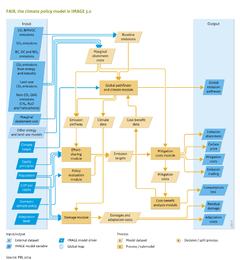Climate policy/Policy issues: Difference between revisions
Jump to navigation
Jump to search
No edit summary |
No edit summary |
||
| Line 2: | Line 2: | ||
|Reference=Den Elzen et al., 2007; Den Elzen and van Vuuren, 2007; Van Vuuren et al., 2011a; Van Vuuren et al., 2012; European Commission, 2010; Den Elzen et al., 2011b; Den Elzen et al., 2012a; UNEP, 2012; Hof et al., 2013; Höhne et al., 2012; Roelfsema et al., 2013a; Roelfsema et al., 2013b; Den Elzen and Höhne, 2010; Den Elzen et al., 2012c; Hof et al., 2012; Den Elzen et al., 2011a; Mendoza Beltrán et al., 2011; Hof et al., 2009; Hof et al., 2011; Hof et al., 2009; Hof et al., 2010; Den Elzen et al., 2012b; Van Vliet et al., 2012; | |Reference=Den Elzen et al., 2007; Den Elzen and van Vuuren, 2007; Van Vuuren et al., 2011a; Van Vuuren et al., 2012; European Commission, 2010; Den Elzen et al., 2011b; Den Elzen et al., 2012a; UNEP, 2012; Hof et al., 2013; Höhne et al., 2012; Roelfsema et al., 2013a; Roelfsema et al., 2013b; Den Elzen and Höhne, 2010; Den Elzen et al., 2012c; Hof et al., 2012; Den Elzen et al., 2011a; Mendoza Beltrán et al., 2011; Hof et al., 2009; Hof et al., 2011; Hof et al., 2009; Hof et al., 2010; Den Elzen et al., 2012b; Van Vliet et al., 2012; | ||
|Description=[[FAIR model|FAIR]] can be used to analyse baseline developments, such as expected climate change damage. However, more often baseline developments are explored using the larger IMAGE framework, and the FAIR model receives this information as input for policy analysis. | |Description=[[FAIR model|FAIR]] can be used to analyse baseline developments, such as expected climate change damage. However, more often baseline developments are explored using the larger IMAGE framework, and the FAIR model receives this information as input for policy analysis. | ||
As part of the IMAGE framework, FAIR can be used to evaluate a range of policies and strategies, including: | |||
*Long-term mitigation strategies such as emission reductions over time ([[Den Elzen et al., 2007]]; [[Den Elzen and van Vuuren, 2007]]; [[Van Vliet et al., 2009]]; [[Van Vuuren et al., 2011b]]; [[Van Vuuren et al., 2012|2012]]); | *Long-term mitigation strategies such as emission reductions over time ([[Den Elzen et al., 2007]]; [[Den Elzen and van Vuuren, 2007]]; [[Van Vliet et al., 2009]]; [[Van Vuuren et al., 2011b]]; [[Van Vuuren et al., 2012|2012]]); | ||
| Line 19: | Line 20: | ||
The FAIR Policy Evaluation module has been used in determining emission reductions resulting from pledges made for 2020 ([[Den Elzen et al., 2012c]]). In 2011, Brazil presented a new, higher estimate for national business-as-usual ({{abbrTemplate|BAU}}) emissions, against which a 36 to 39% reduction pledge was made. The total pledge for all greenhouse gas emissions including emissions from deforestation was a reduction of 20 to 24% compared to the PBL/IIASA BAU emission projections. This reduction is substantially lower than pledged by Brazil from national {{abbrTemplate|BAU}} projections . | The FAIR Policy Evaluation module has been used in determining emission reductions resulting from pledges made for 2020 ([[Den Elzen et al., 2012c]]). In 2011, Brazil presented a new, higher estimate for national business-as-usual ({{abbrTemplate|BAU}}) emissions, against which a 36 to 39% reduction pledge was made. The total pledge for all greenhouse gas emissions including emissions from deforestation was a reduction of 20 to 24% compared to the PBL/IIASA BAU emission projections. This reduction is substantially lower than pledged by Brazil from national {{abbrTemplate|BAU}} projections . | ||
As shown in Figure below, all reductions result from reduced emissions from deforestation (REDD). The contributions from {{abbrTemplate|REDD}} projects (about 560 MtCO2) are expected to exceed or match the required total reduction in all greenhouse gas emissions of 470 and 570 Mt CO2eq for the 36% and 39% reduction pledge scenarios. | |||
|Example= | |||
Revision as of 14:22, 15 May 2014
Parts of Climate policy/Policy issues
